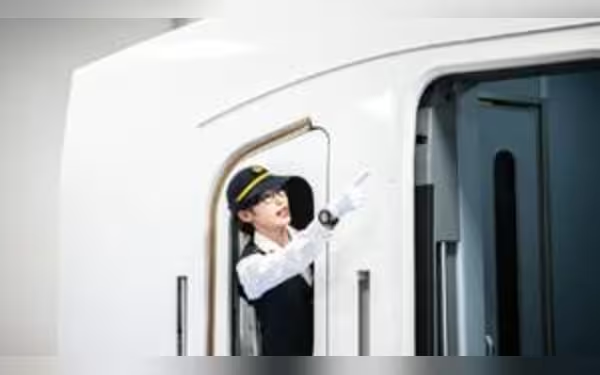Sunday, October 6, 2024 02:25 AM
Shinkansen Bullet Train Celebrates 60 Years of Excellence in Japan
- Shinkansen revolutionized rail travel in Japan since 1964.
- Safety and punctuality are top priorities for Shinkansen.
- The bullet train symbolizes Japan's economic growth and innovation.
 Image Credits: nation_pk
Image Credits: nation_pkJapan's Shinkansen bullet train marks 60 years of speed, safety, and innovation, transforming rail travel and boosting the economy.
On October 1, 1964, Japan introduced the Shinkansen, commonly known as the bullet train, marking a significant milestone in the world of rail travel. This high-speed train service began its journey between Tokyo and Osaka, symbolizing Japan's rapid economic growth following World War II. Over the past 60 years, the Shinkansen has not only transformed the way people travel but has also become a vital part of Japan's economy and daily life.
Today, the Shinkansen is celebrated for its remarkable speed, cleanliness, and punctuality. With nearly a quarter of a million passengers riding the Tokaido Shinkansen line each day, the service is a testament to Japan's commitment to excellence in public transportation. The trains can reach speeds of up to 320 kilometers per hour, allowing travelers to cover the distance from Tokyo to Hakata in just about five hours. This efficiency is complemented by the frequency of service, with top-speed Nozomi trains arriving every five minutes.
At the heart of this impressive operation is a rigorous training program for staff. For instance, 22-year-old Hazuki Okuno, dressed in her pristine uniform, practices the essential protocols at a state-of-the-art training center. Here, future conductors and team members undergo what is described as an "intense education" to ensure they are well-prepared for their roles. Safety is paramount, and JR Central, the operator of the Shinkansen, prides itself on having never experienced an accident resulting in death or injury on its trains, even in a country prone to natural disasters like earthquakes and typhoons.
As Okuno rehearses her lines, such as "Thank you for riding," she embodies the dedication and professionalism that define the Shinkansen experience. The emphasis on cleanliness, punctuality, and safety is not just a job; it is a way of life for those involved in this iconic service. Daisuke Kumajima, a PR officer at JR Central, emphasizes that safety is "our top priority," highlighting the company's commitment to thorough training and education for its employees.
As we celebrate the 60th anniversary of the Shinkansen, it is essential to recognize its impact on Japan and the world. The bullet train has set a standard for high-speed rail systems globally, showcasing how effective public transportation can enhance economic growth and improve the quality of life for citizens. The Shinkansen is not just a mode of transport; it is a symbol of Japan's resilience, innovation, and dedication to excellence. As we look to the future, the lessons learned from the Shinkansen's success can inspire other nations to invest in their public transportation systems, ultimately leading to a more connected and efficient world.













